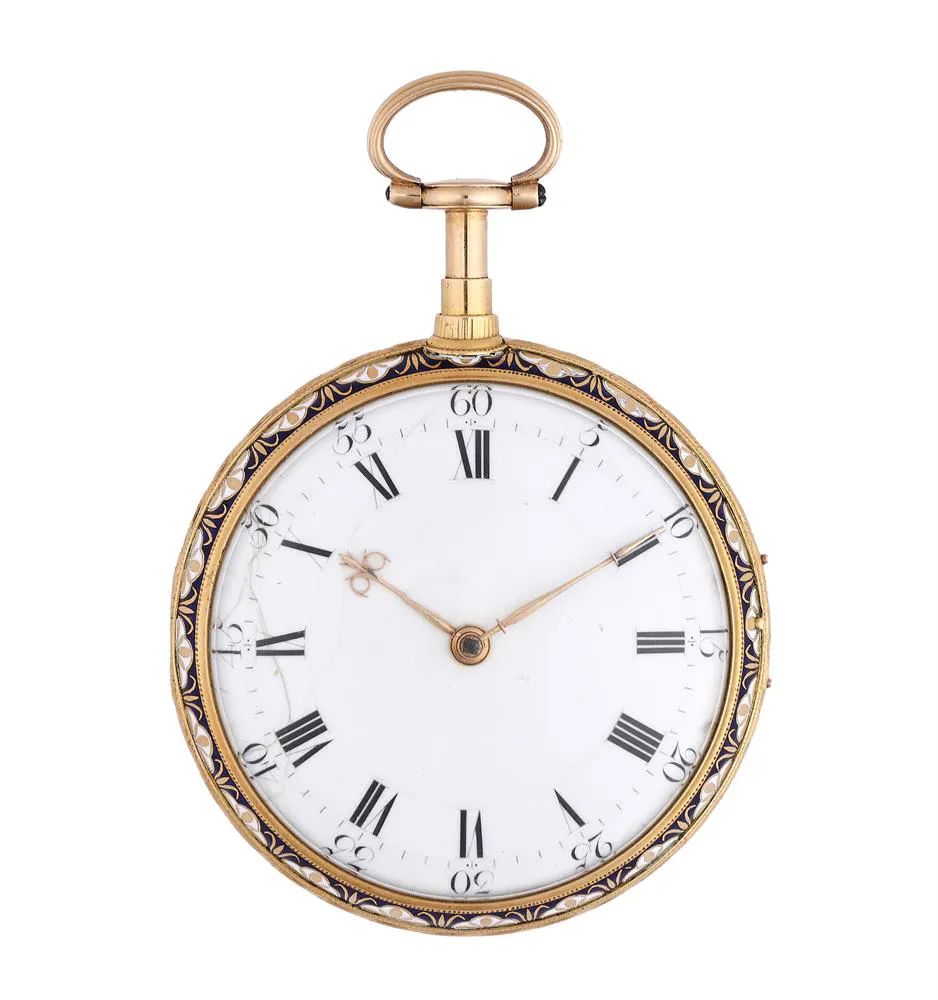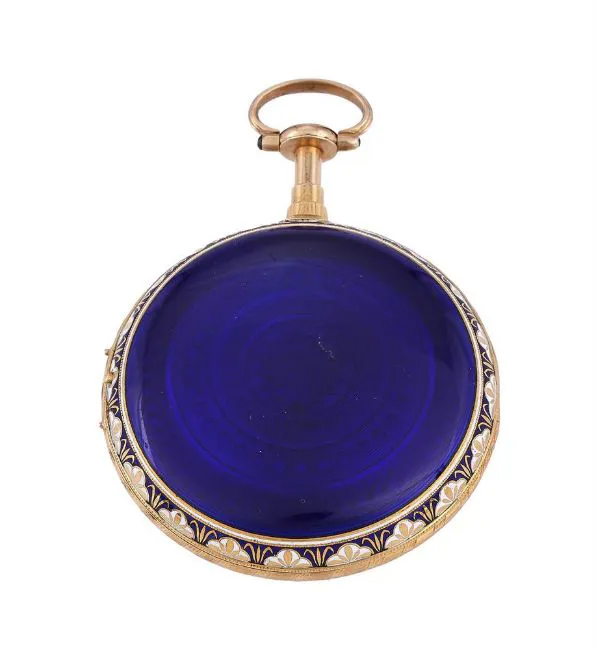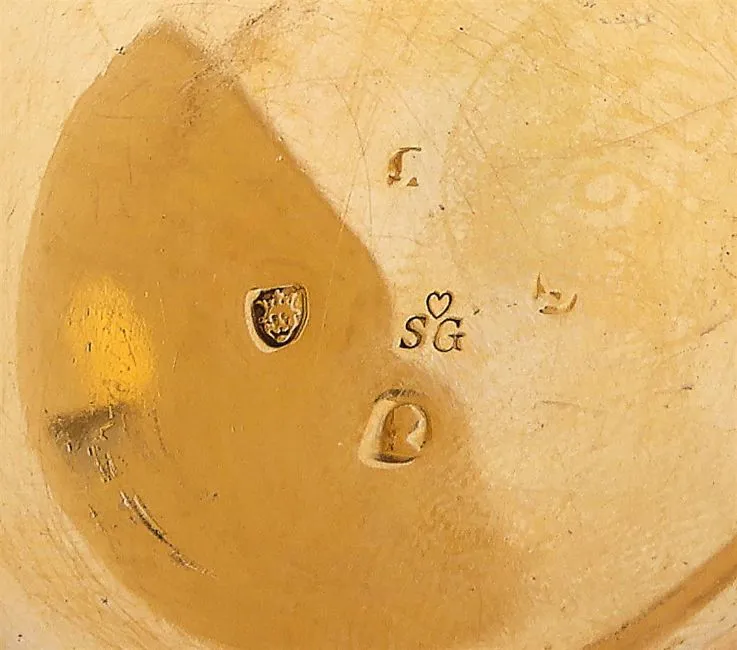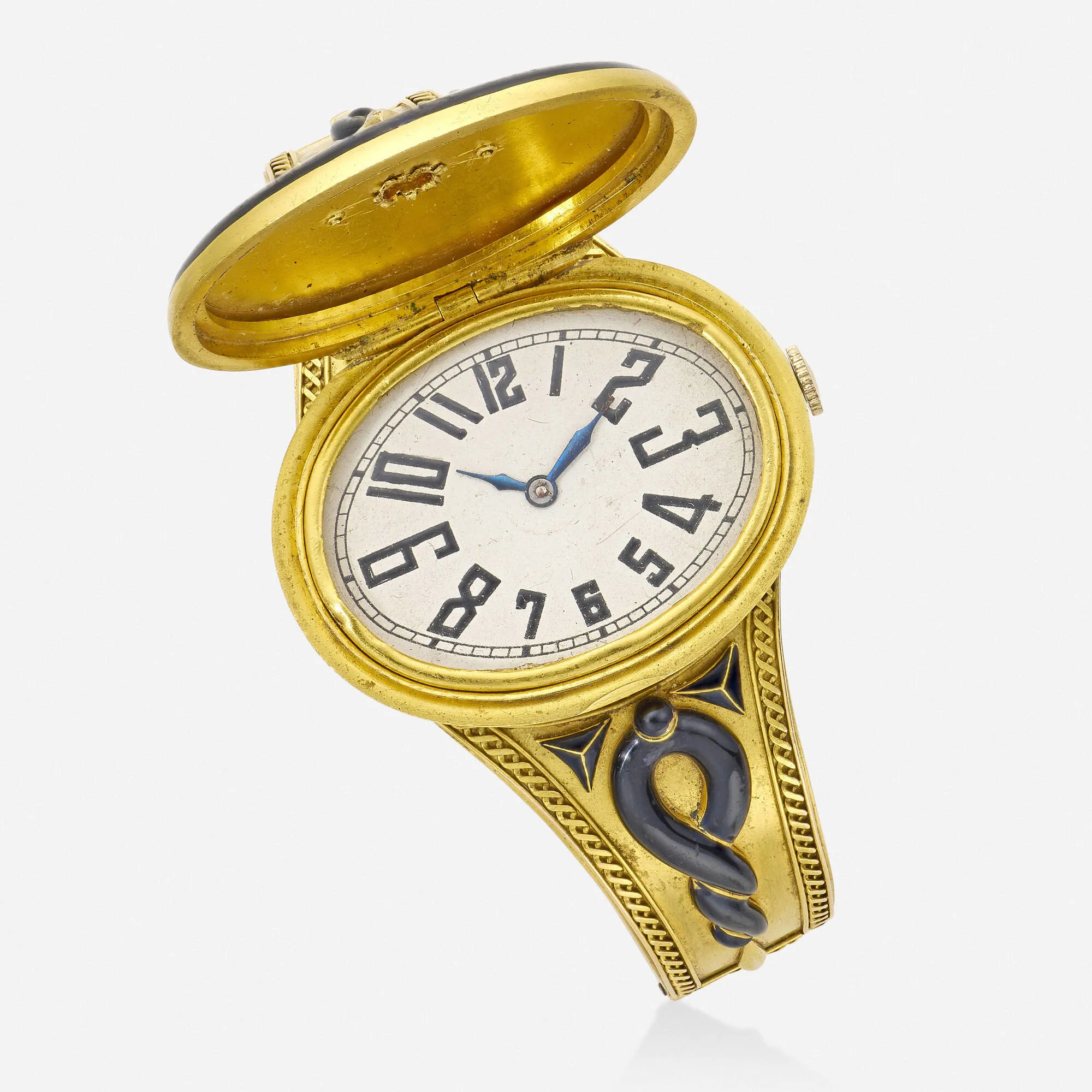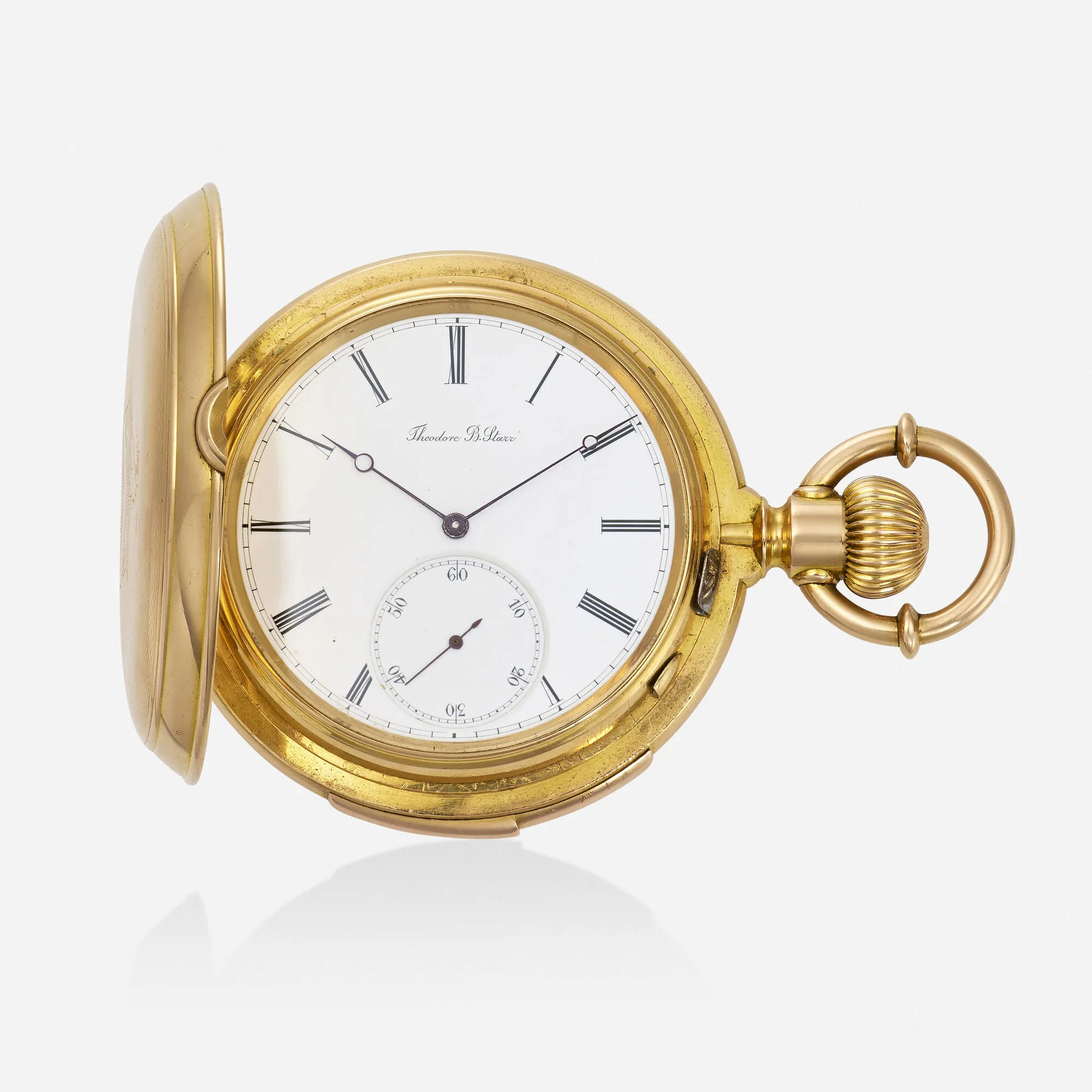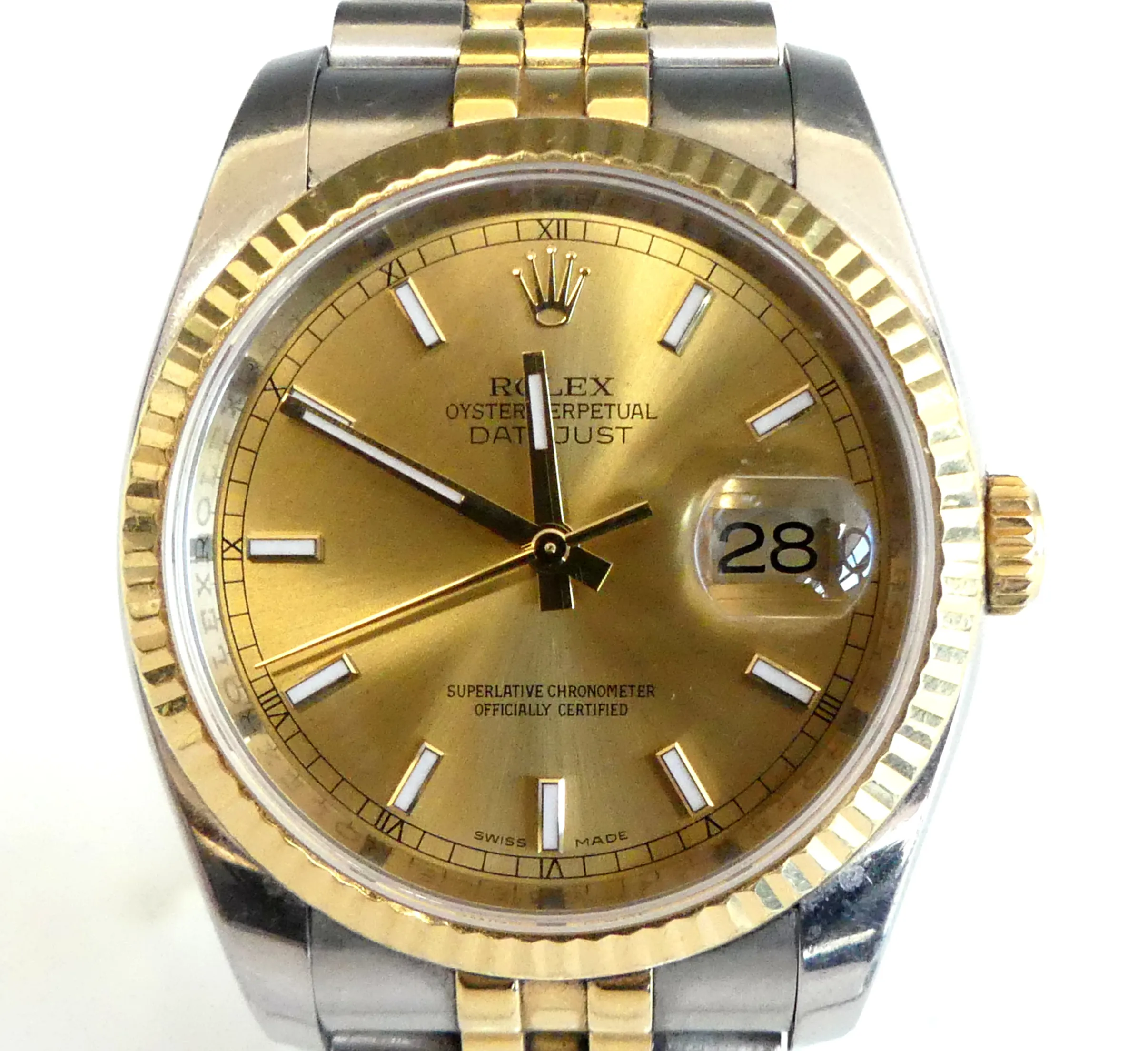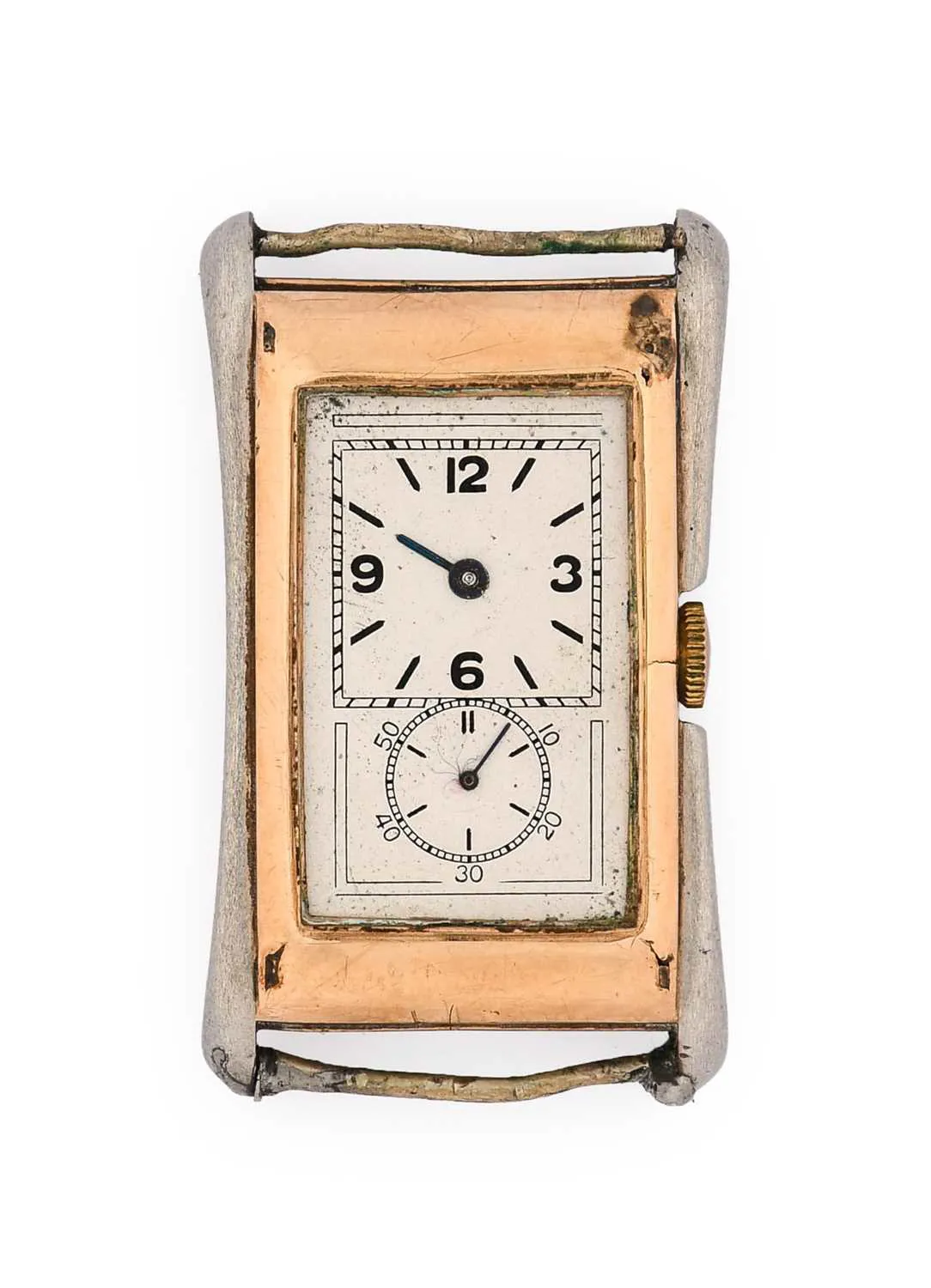Source:
Event:
Date:
Lot Number:
Condition: -
Year of Production: 1793
Case Size: 55mm
Case Material: Yellow gold and Enamel
Dial Color: White
Bracelet/Strap: -
Movement Type: -
Box: No
Papers: No
Location: United Kingdom
Estimates 2,616 - 3,924 USD
Sale Price
Description
A FINE GEORGE III BLUE GUILLOCHE ENAMELLED GOLD POCKET WATCH WITH CYLINDER ESCAPEMENT
VULLIAMY, LONDON, 1793
The gilt full plate single fusee movement with four columnar pillars pinned through the backplate, shaped stop-iron block and cylinder escapement regulated by sprung three-arm steel balance with Tompion type regulation, the backplate with fine symmetric foliate scroll pierced and engraved balance cock with faceted diamond endstone, herringbone bordered rim and grotesque mask at the junction with wedge-shaped leafy scroll engraved and pierced foot flanked by silvered regulation disc set within adjacent applied serpent inhabited scroll engraved panel infill opposing signature
Vulliamy, LONDON
and with coded serial number
zus
, with gilt brass dust cover, the circular slightly convex white Roman numeral enamel dial with Arabic five minutes to outer track and gold
beetle and poker
hands, the case with radial engine-turned decoration to the blue guilloche enamel decorated hinged rear cover incorporating repeating blue and cream arcaded border, the hinged bezel with conforming border and with fine chevron engraved band to circumference, marks for London 1793, maker
SG
.
The pillar plate 4.2cm (1.675ins) diameter; the case 5.5cm (2.25ins approx.) diameter.
Provenance:
The Leonard Fuller Collection.
Francois-Justin Vulliamy was born in 1712, the son of a pastor from Gingins, Pays de Vaud, Switzerland. He initially trained and moved to Paris to make watches there, but when George Graham invented the cylinder escapement he came to London (in around 1730), to familiarise himself with it. It was around this that time he met Benjamin Gray with whom he subsequently formed a partnership in 1743; the year after Gray had been appointed Watchmaker in Ordinary to George II. In 1746 Vulliamy married Benjamin's daughter, Mary and they subsequently had four children, Jane, Benjamin, Lewis and Mary. Justin Vulliamy was proud of his roots, and took the lead in permanently establishing the Swiss Church in London in 1762. Whilst Vulliamy was in partnership with Gray their work was signed with both names. After the death of Gray in 1764 the Royal Warrant passed to Vulliamy who signed with either his full name or the shortened version 'Just. Vulliamy'. In around 1780 Justin's son, Benjamin, joined his father in partnership and the workshop subsequently adopted the practice of signing their work with the family surname 'Vulliamy' alone. Justin Vulliamy died in 1797 leaving the business in the hands of Benjamin, who in turn passed it on to his son, Benjamin Lewis, who worked from 52 Pall Mall, served as Warden of the Clockmakers' Company 1821-5 and was appointed Master five times. All three generations of the Vulliamy clockmaking family benefitted from Royal patronage.
